The document provides an overview of SQL commands and operations including: 1) Creating a database and table, inserting and selecting data, updating records with WHERE clauses. 2) Altering tables by adding or modifying columns and constraints. 3) Different SQL statements like SELECT, INSERT, UPDATE and DELETE and clauses like WHERE are discussed along with syntax and examples.

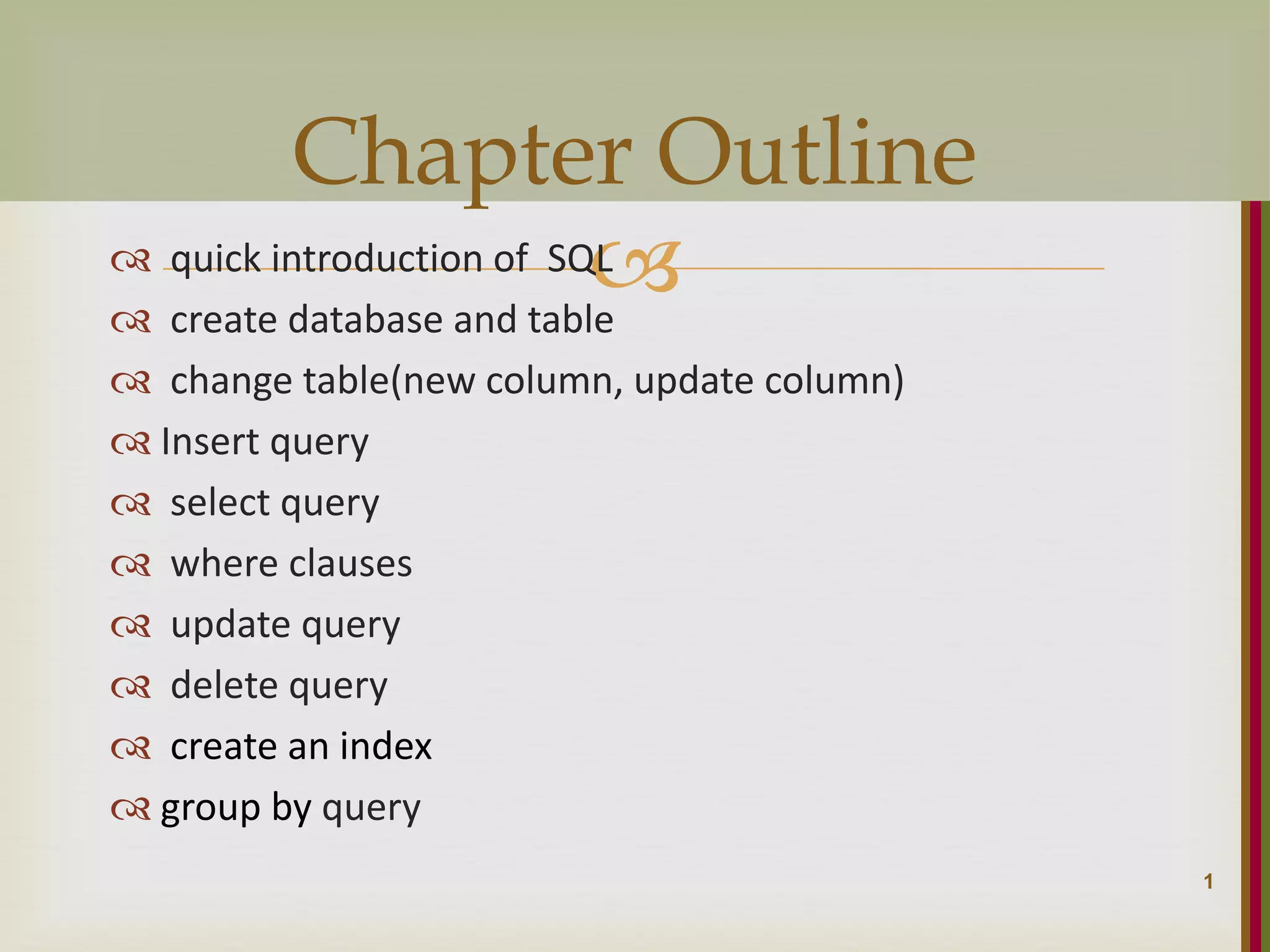
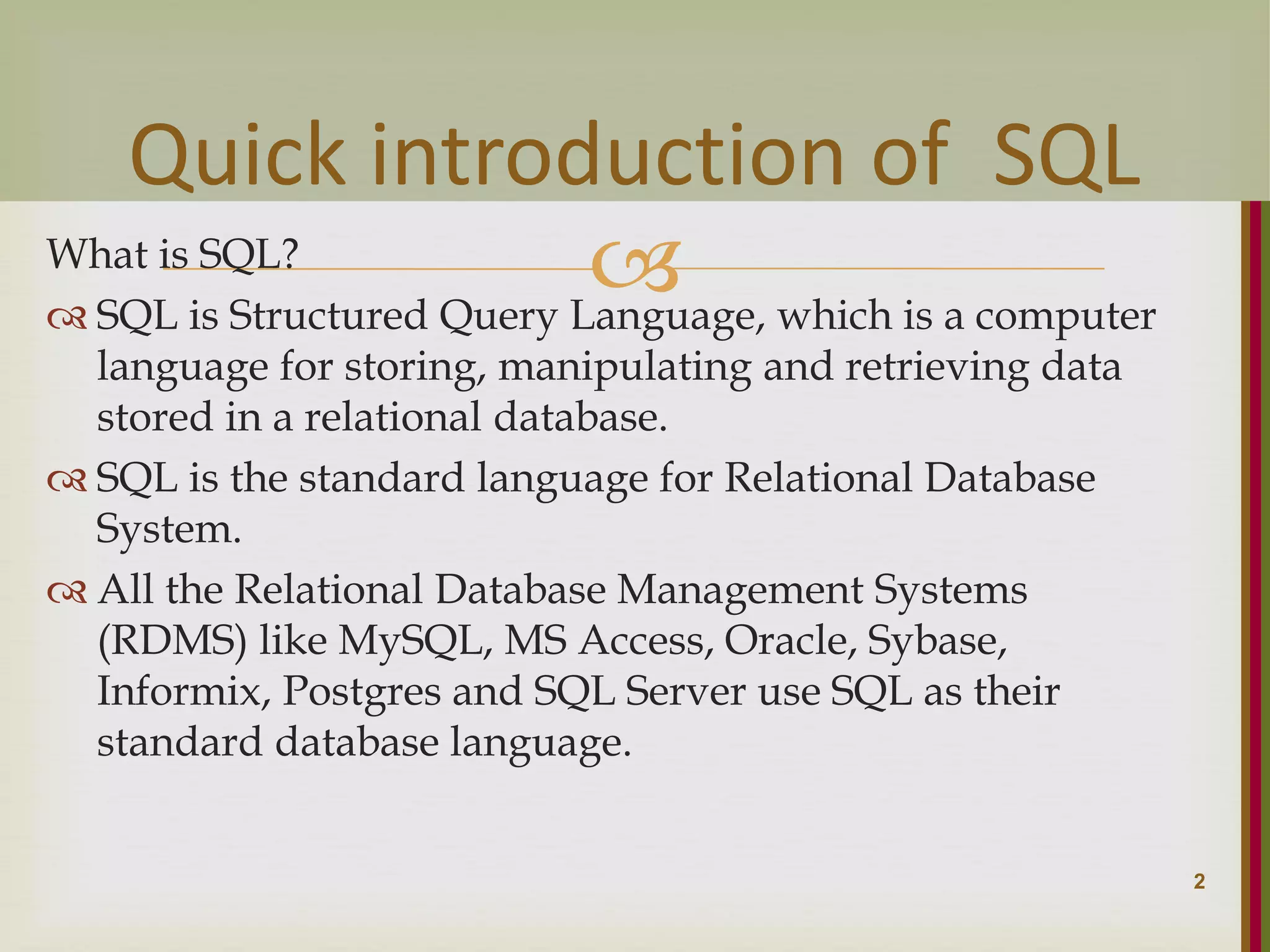
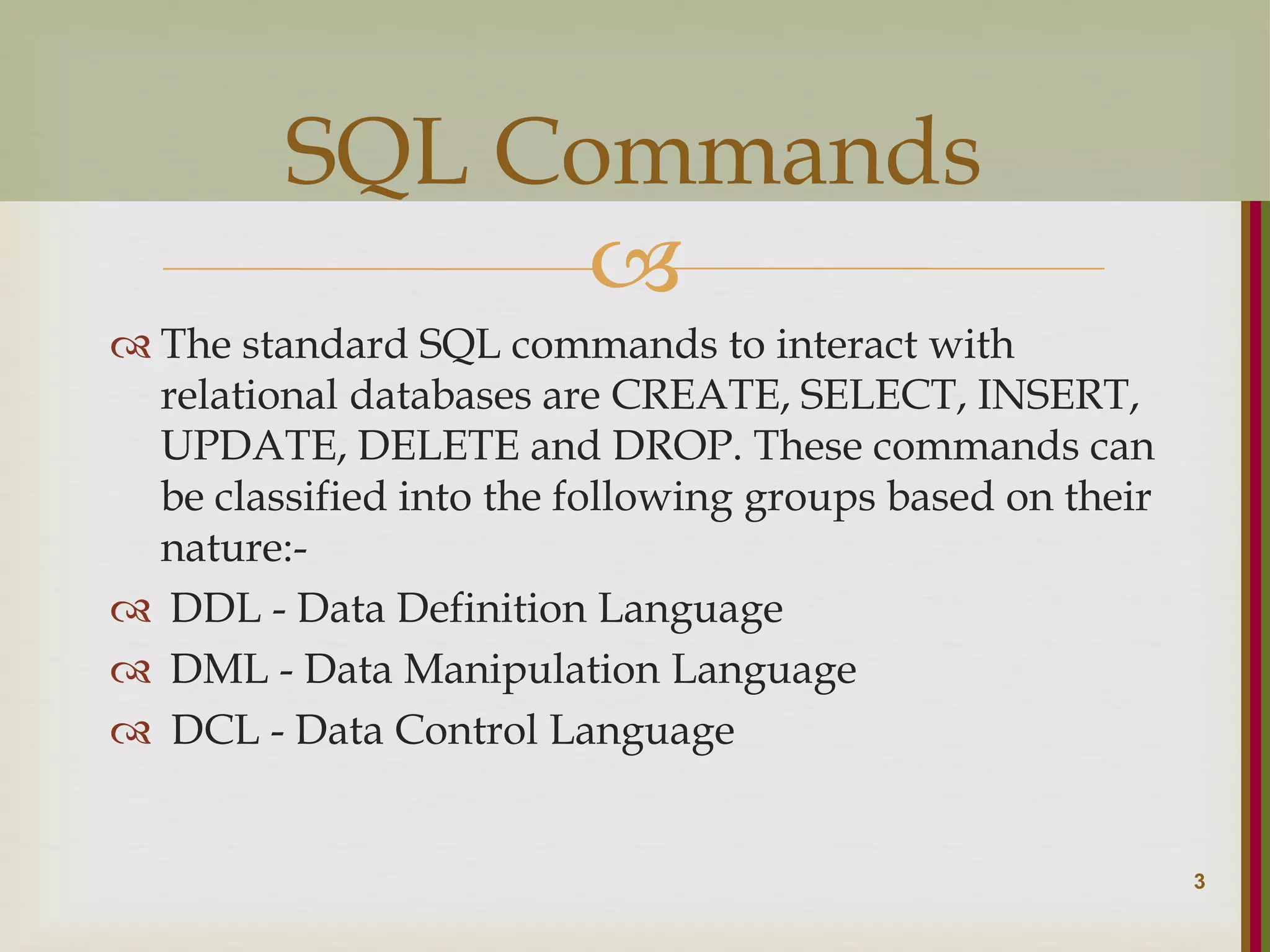
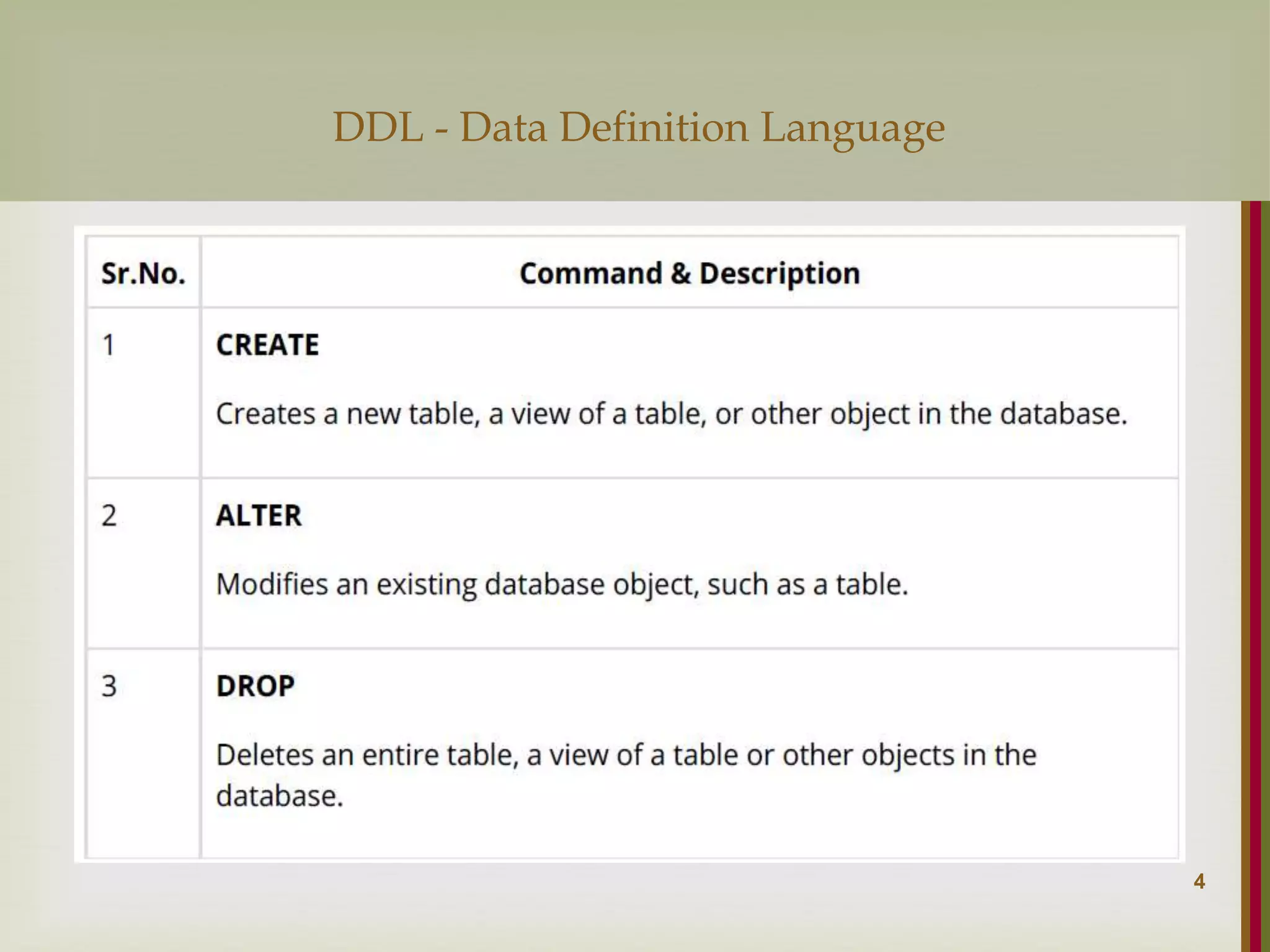

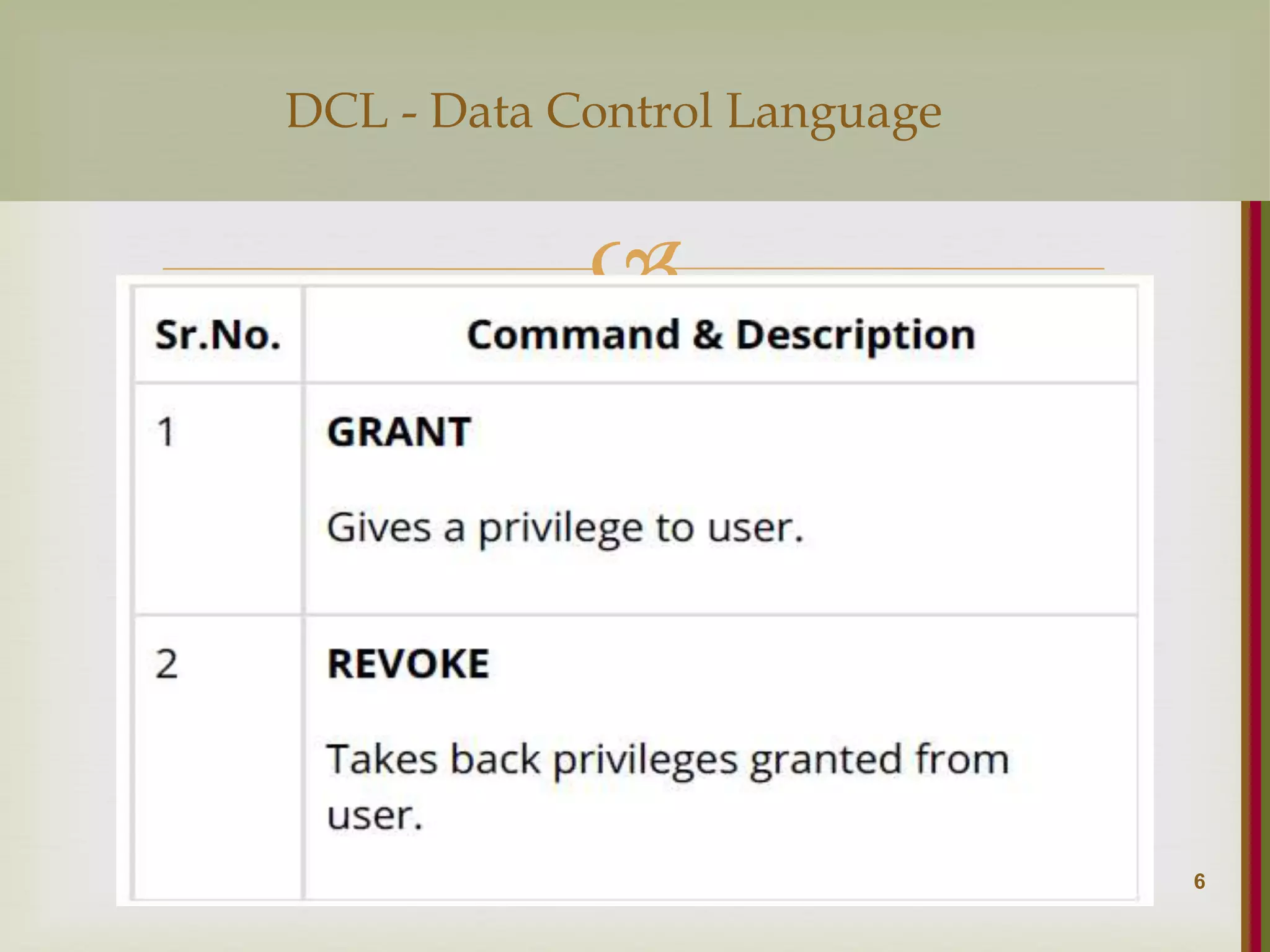
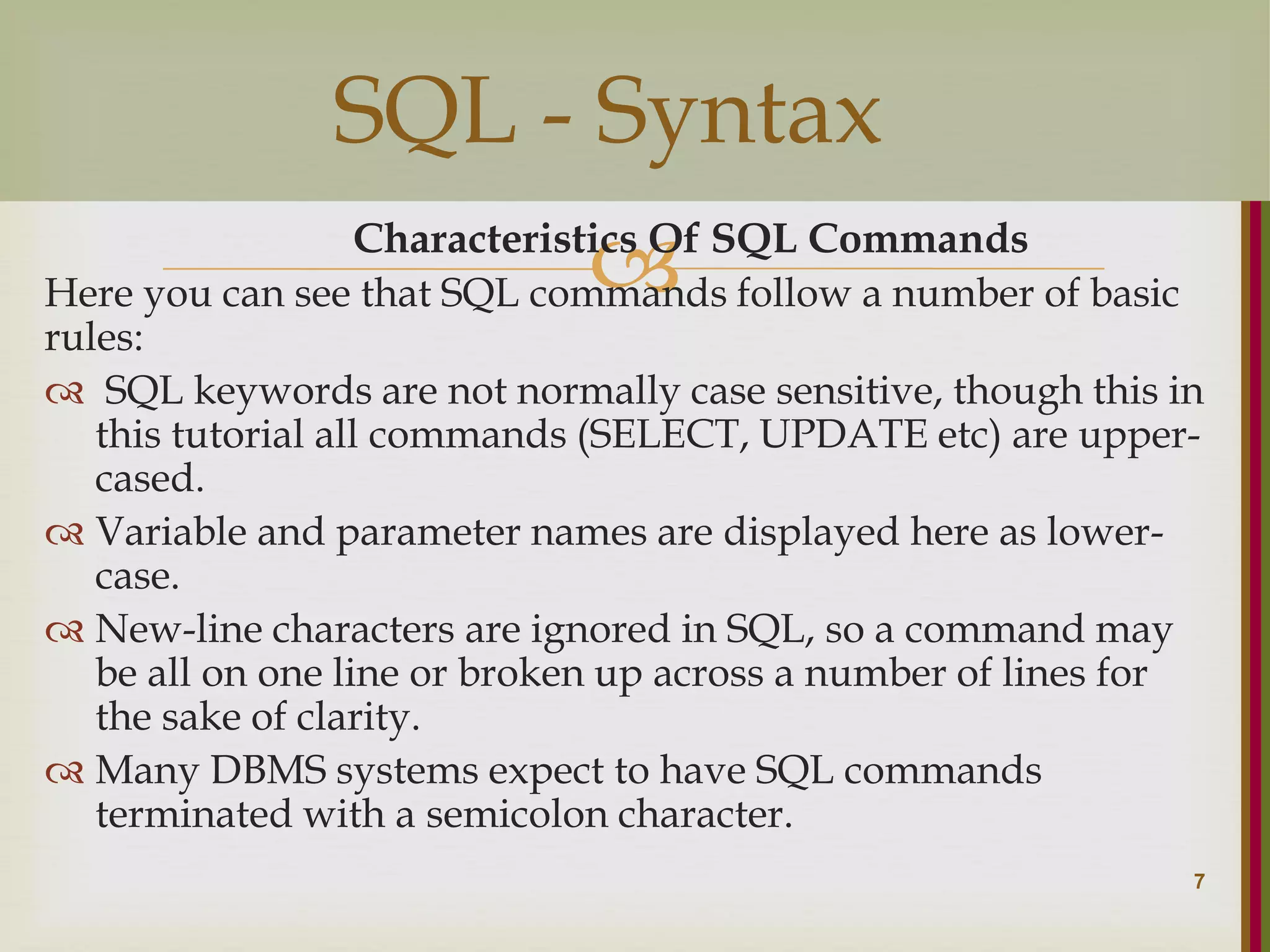
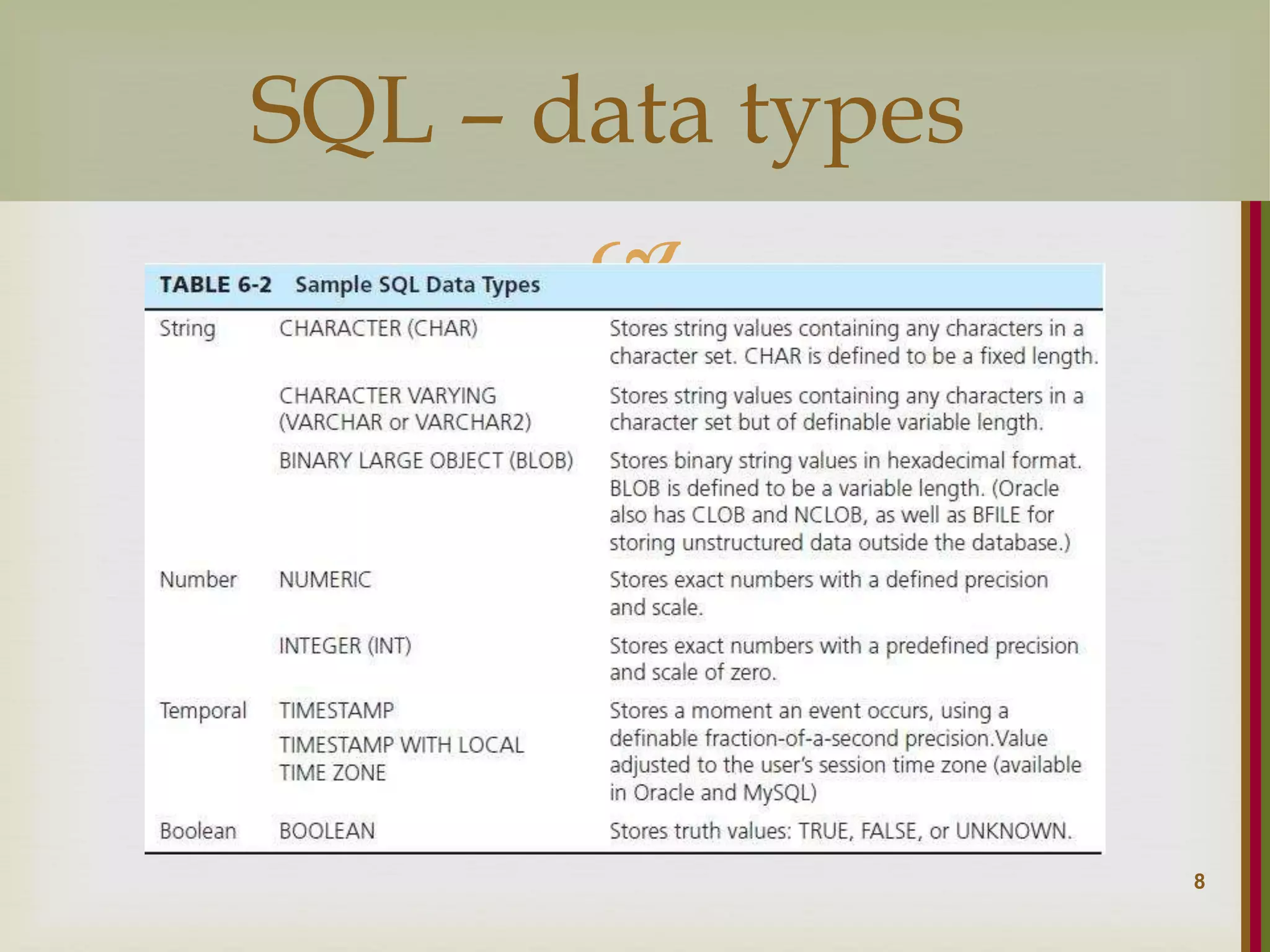

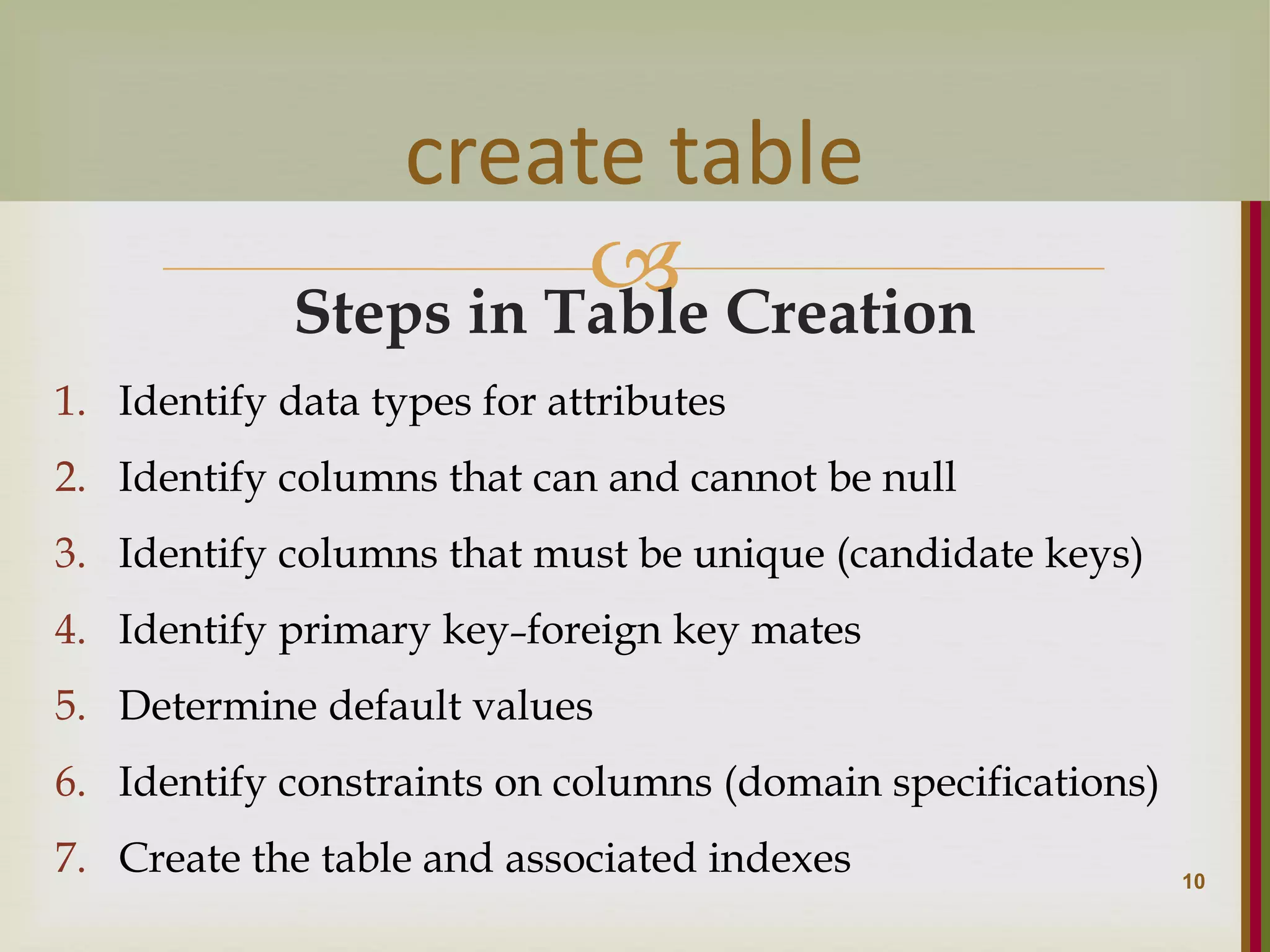
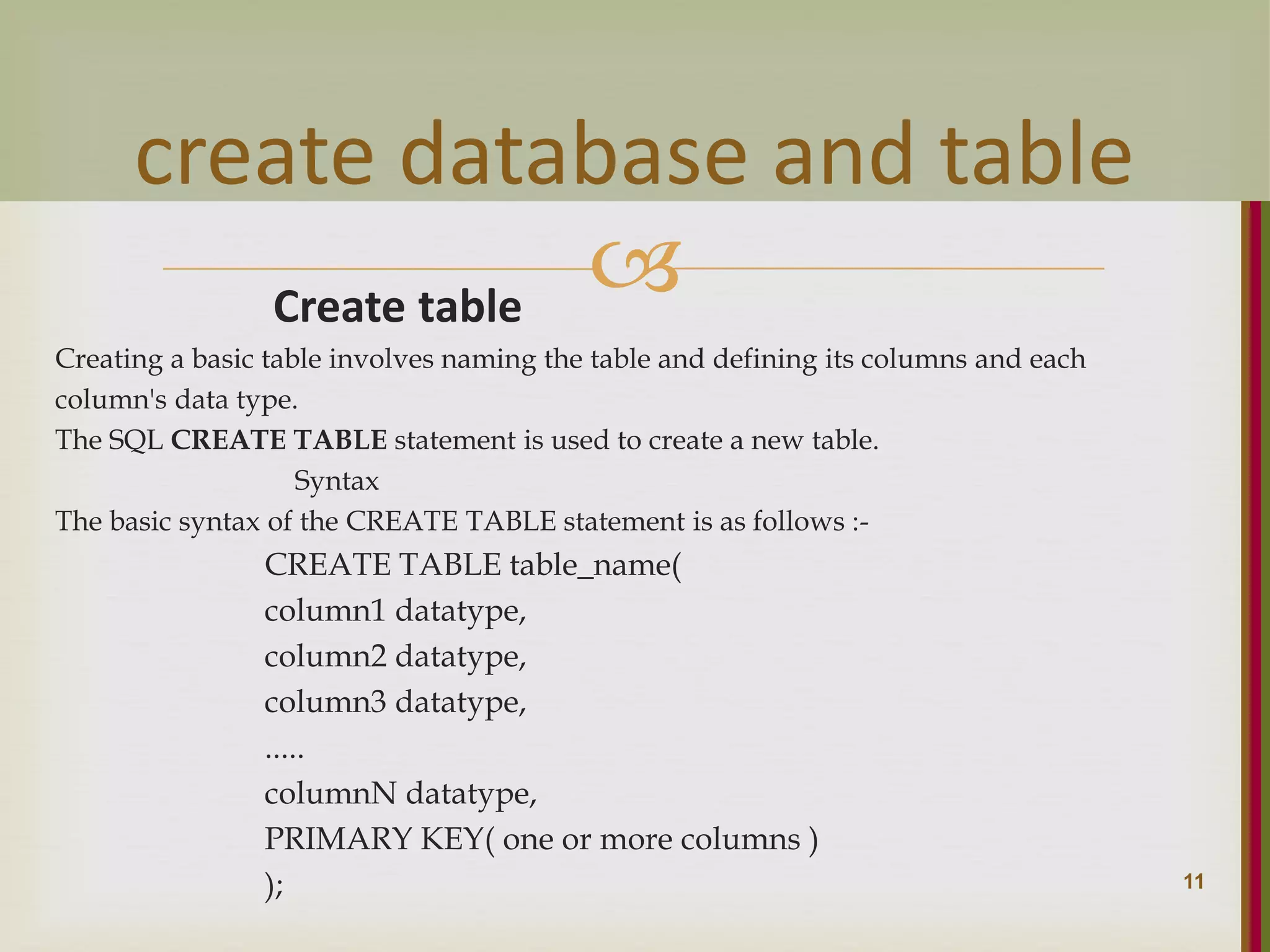




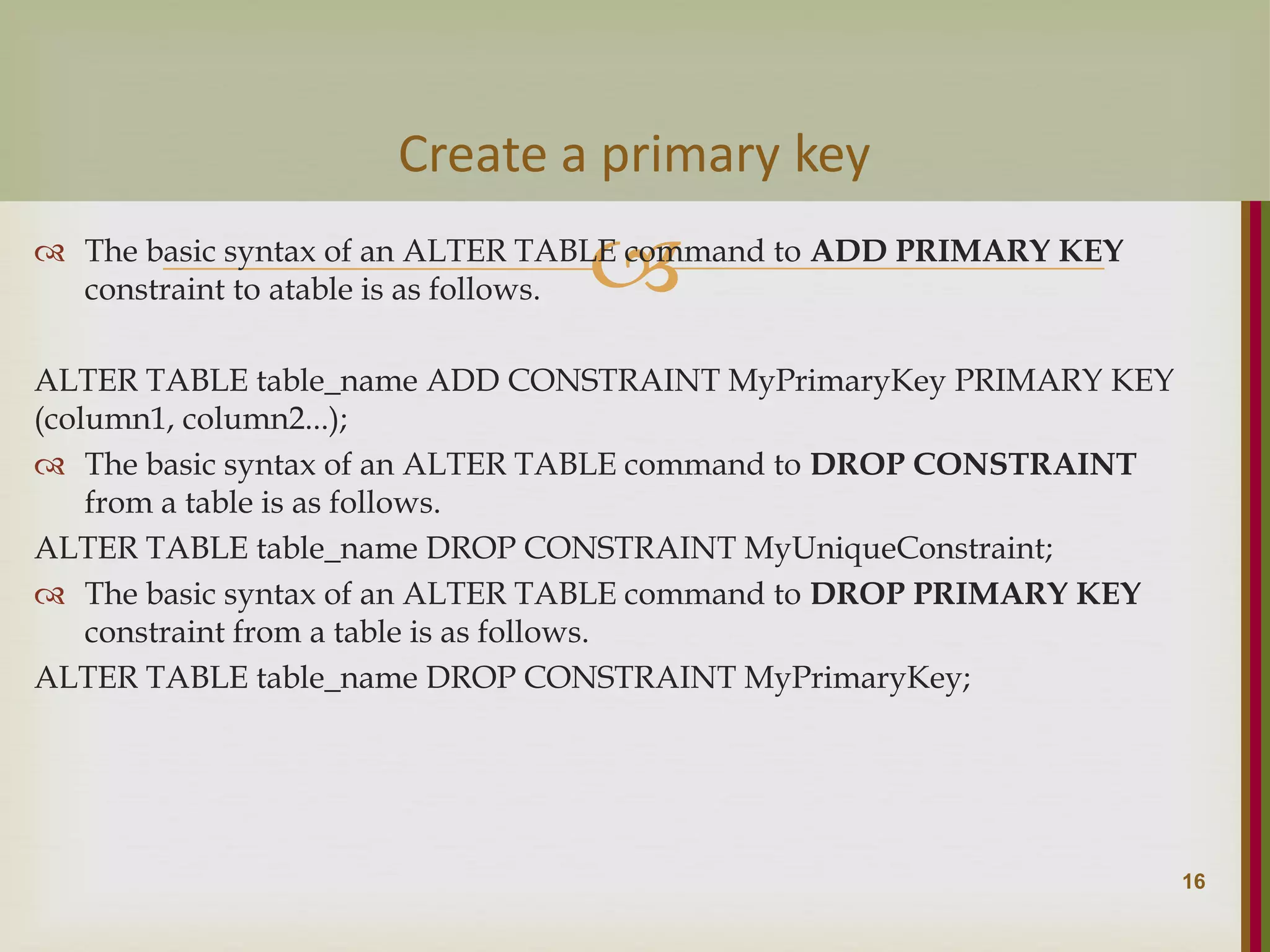
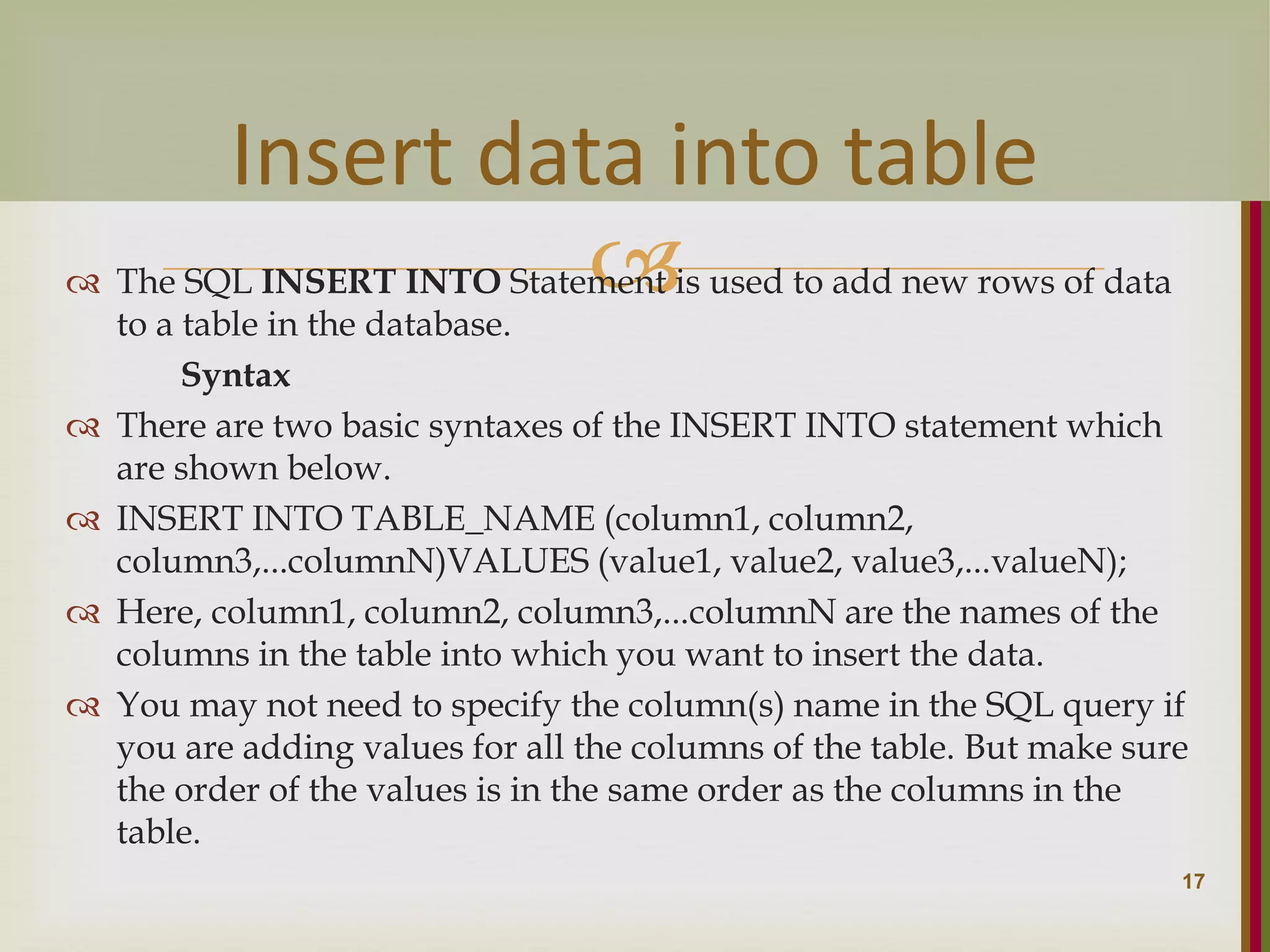
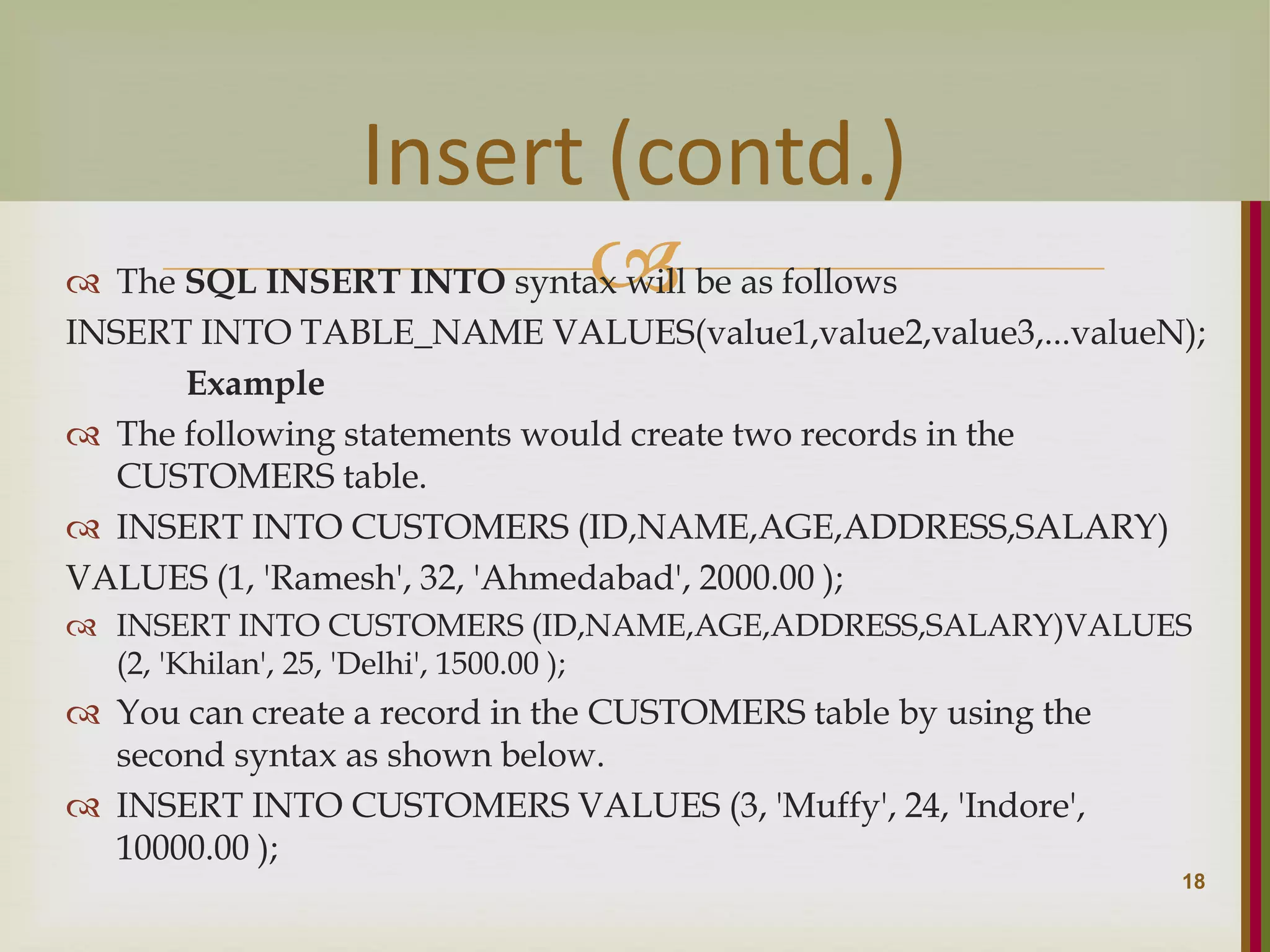
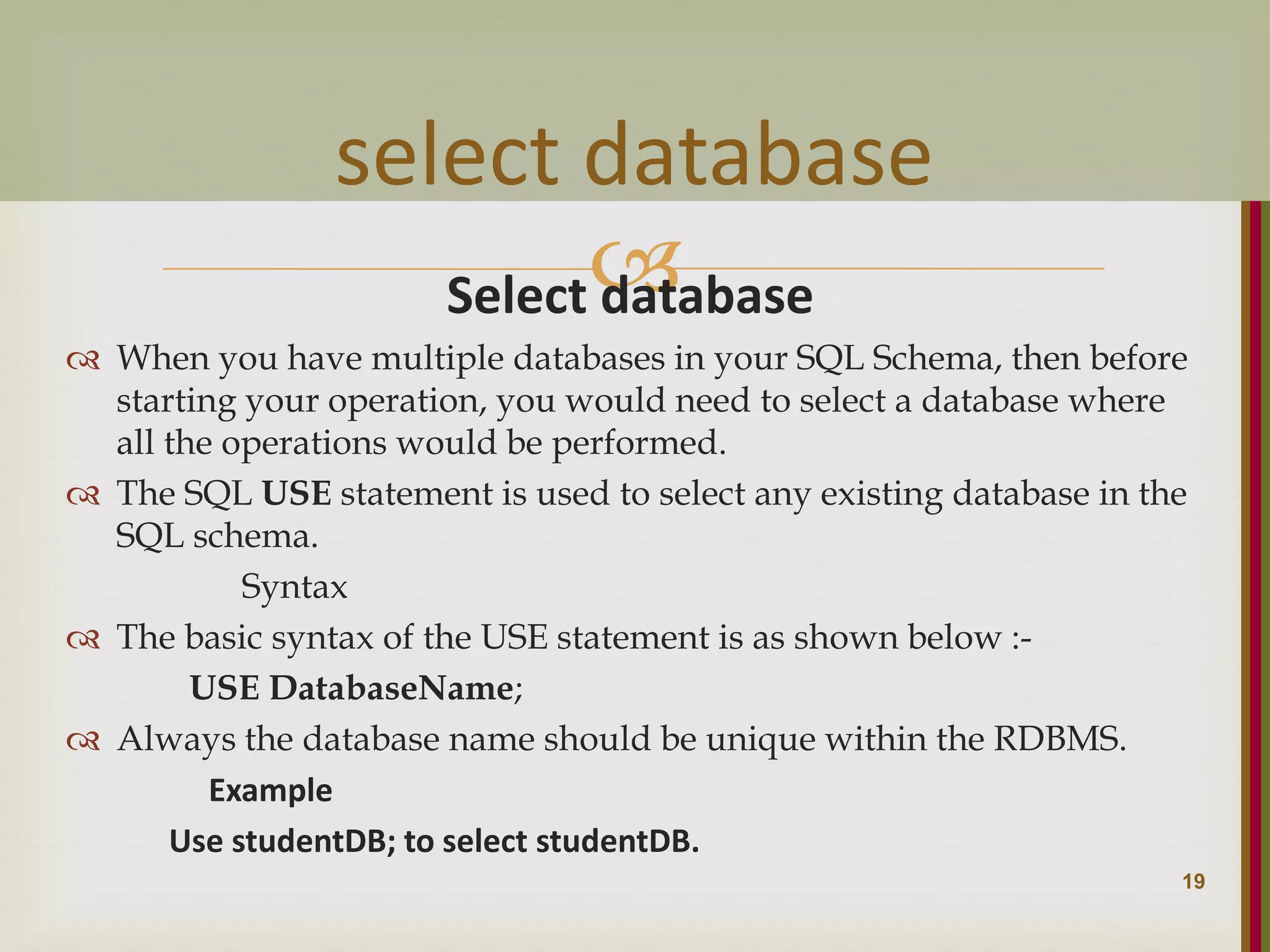



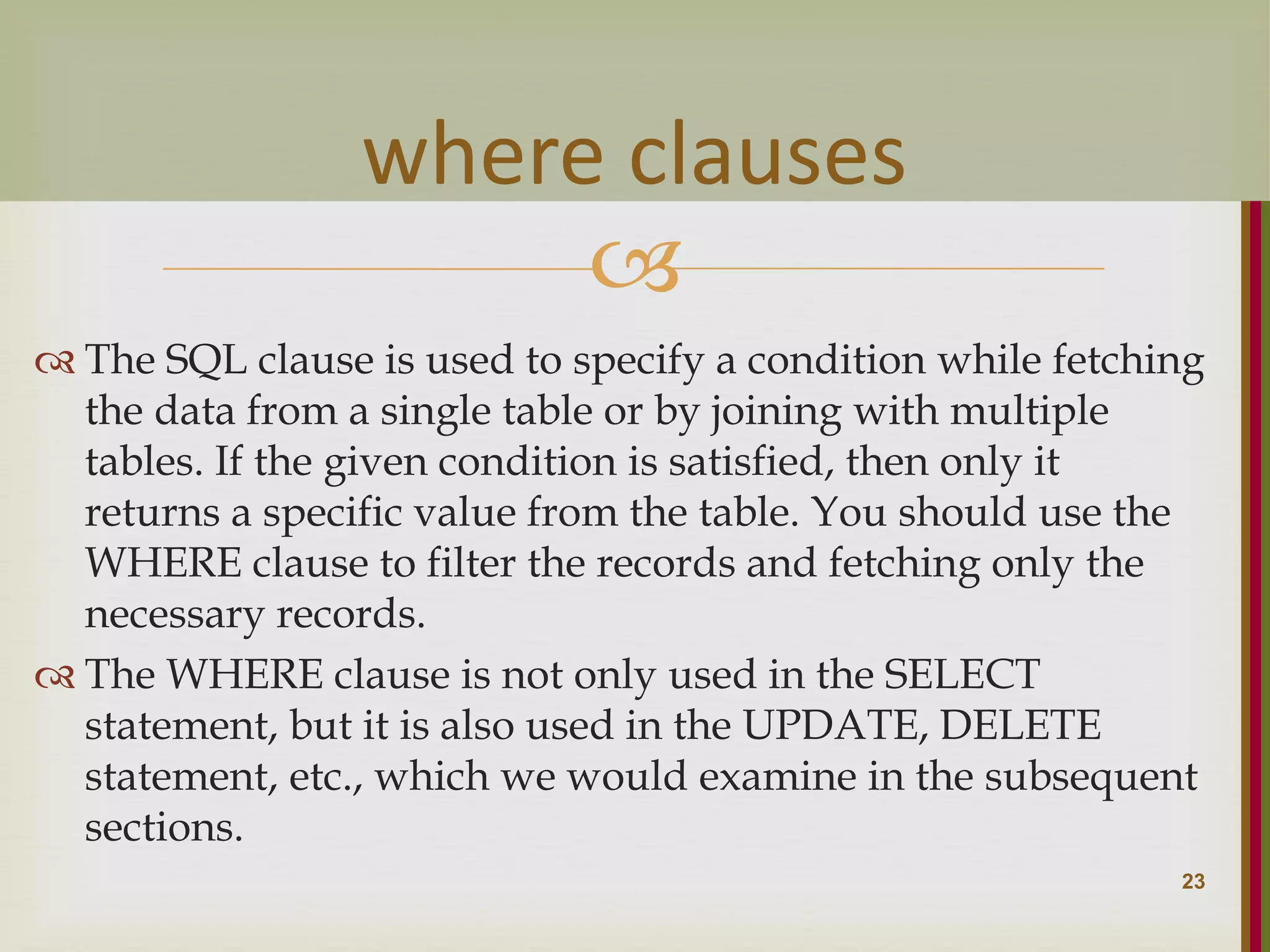
![ Syntax The basic syntax of the SELECT statement with the WHERE clause is as shown below. SELECT column1, column2, columnN FROM table_name WHERE [condition] You can specify a condition using the comparison or logical operators like >, <, =, LIKE, NOT, etc. The following examples would make this concept clear. Example Consider the CUSTOMERS table having the following records above 24 where clauses](https://image.slidesharecdn.com/chapter8sql-220802074348-410cf173/75/chapter-8-SQL-ppt-25-2048.jpg)
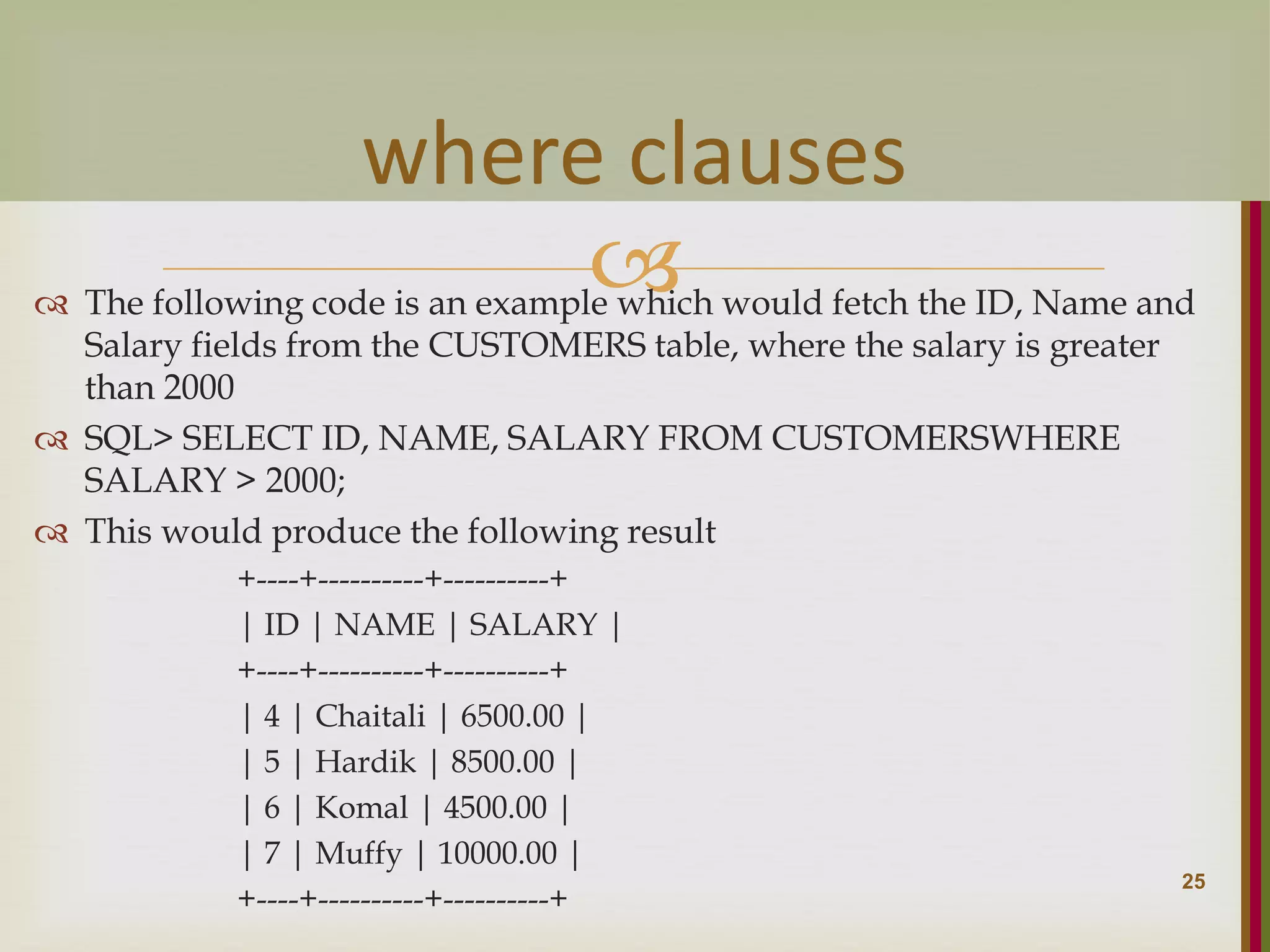
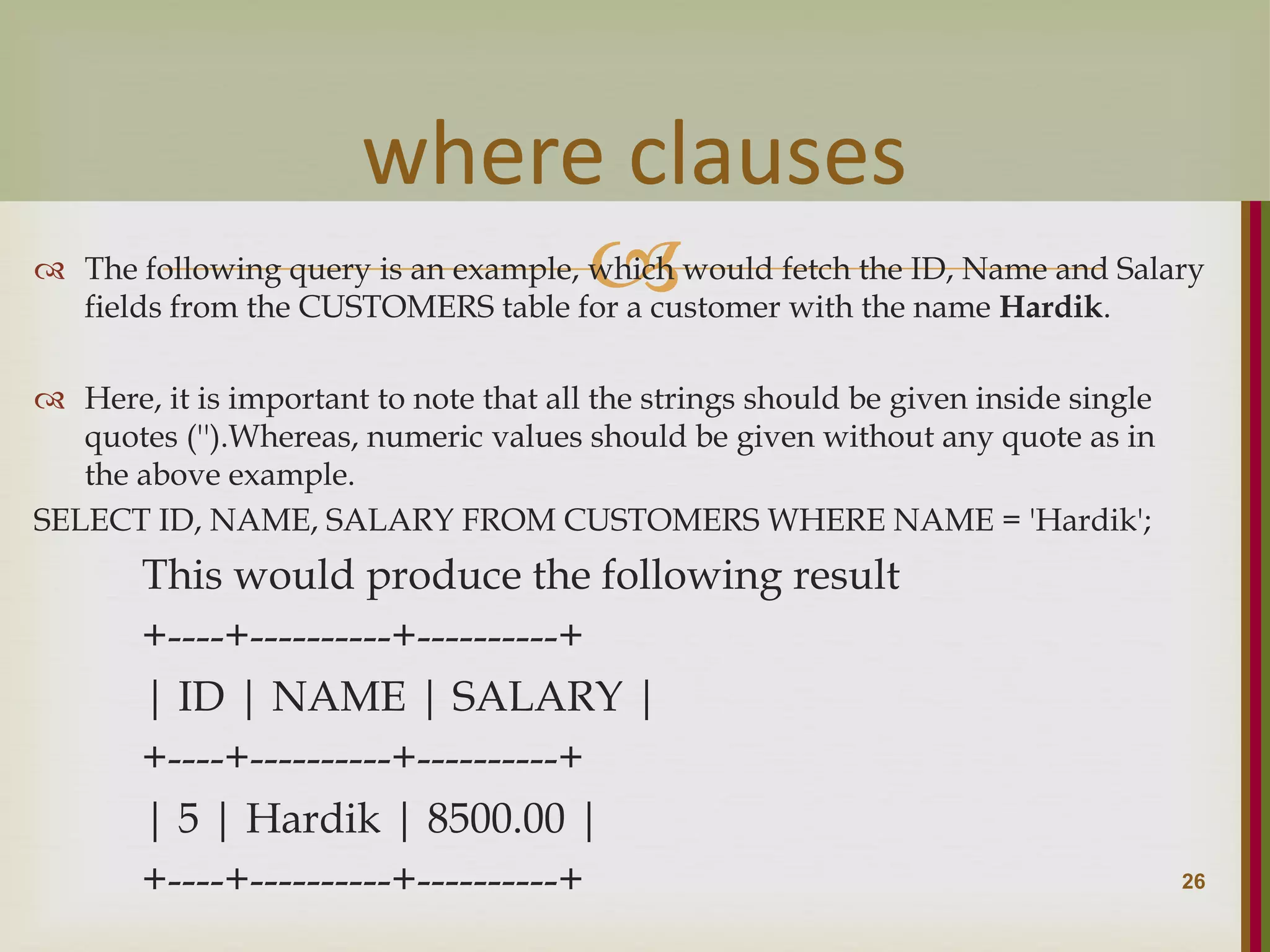
![ The SQL UPDATE Query is used to modify the existing records in a table. You can use the WHERE clause with the UPDATE query to update the selected rows, otherwise all the rows would be affected. Syntax The basic syntax of the UPDATE query with a WHERE clause is as follows :- UPDATE table_name SET column1 = value1, column2 = value2...., columnN = valueN WHERE [condition]; You can combine N number of conditions using the AND or the OR operators. The following query will update the ADDRESS for a customer whose ID number is 6 in the customer table. UPDATE CUSTOMERS SET ADDRESS = 'Pune‘ WHERE ID = 6; 27 Update query](https://image.slidesharecdn.com/chapter8sql-220802074348-410cf173/75/chapter-8-SQL-ppt-28-2048.jpg)
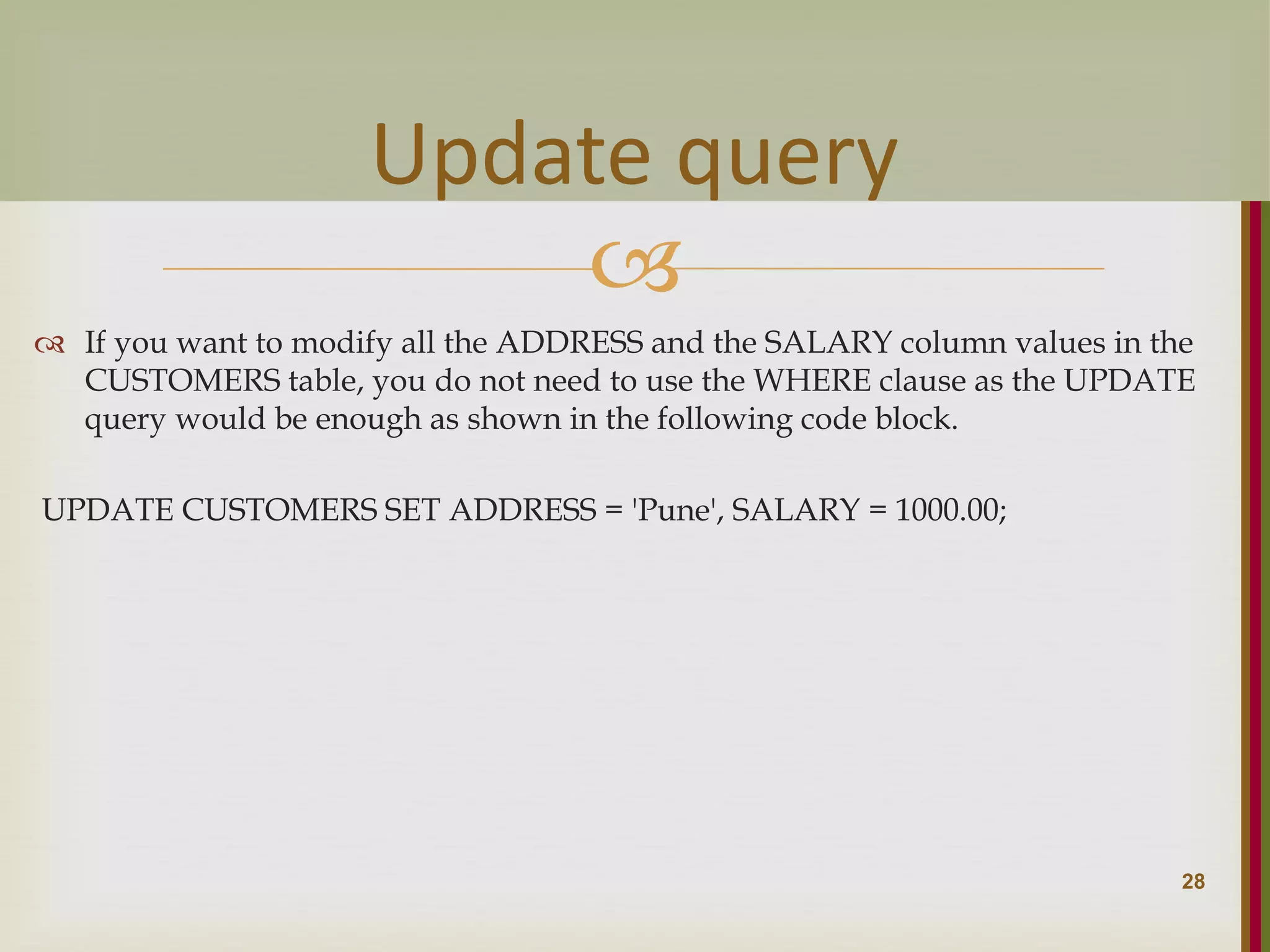
![ The SQL DELETE Query is used to delete the existing records from a table. You can use the WHERE clause with a DELETE query to delete the selected rows, otherwise all the records would be deleted. Syntax The basic syntax of the DELETE query with the WHERE clause is as follows :- DELETE FROM table_name WHERE [condition]; You can combine N number of conditions using AND or OR operators. The following code has a query, which will DELETE a customer, whose ID is 6. DELETE FROM CUSTOMERS WHERE ID = 6; If you want to DELETE all the records from the CUSTOMERS table, you do not need to use the WHERE clause and the DELETE query would be as follows − DELETE FROM CUSTOMERS; Now, the CUSTOMERS table would not have any record. 29 Delete query](https://image.slidesharecdn.com/chapter8sql-220802074348-410cf173/75/chapter-8-SQL-ppt-30-2048.jpg)
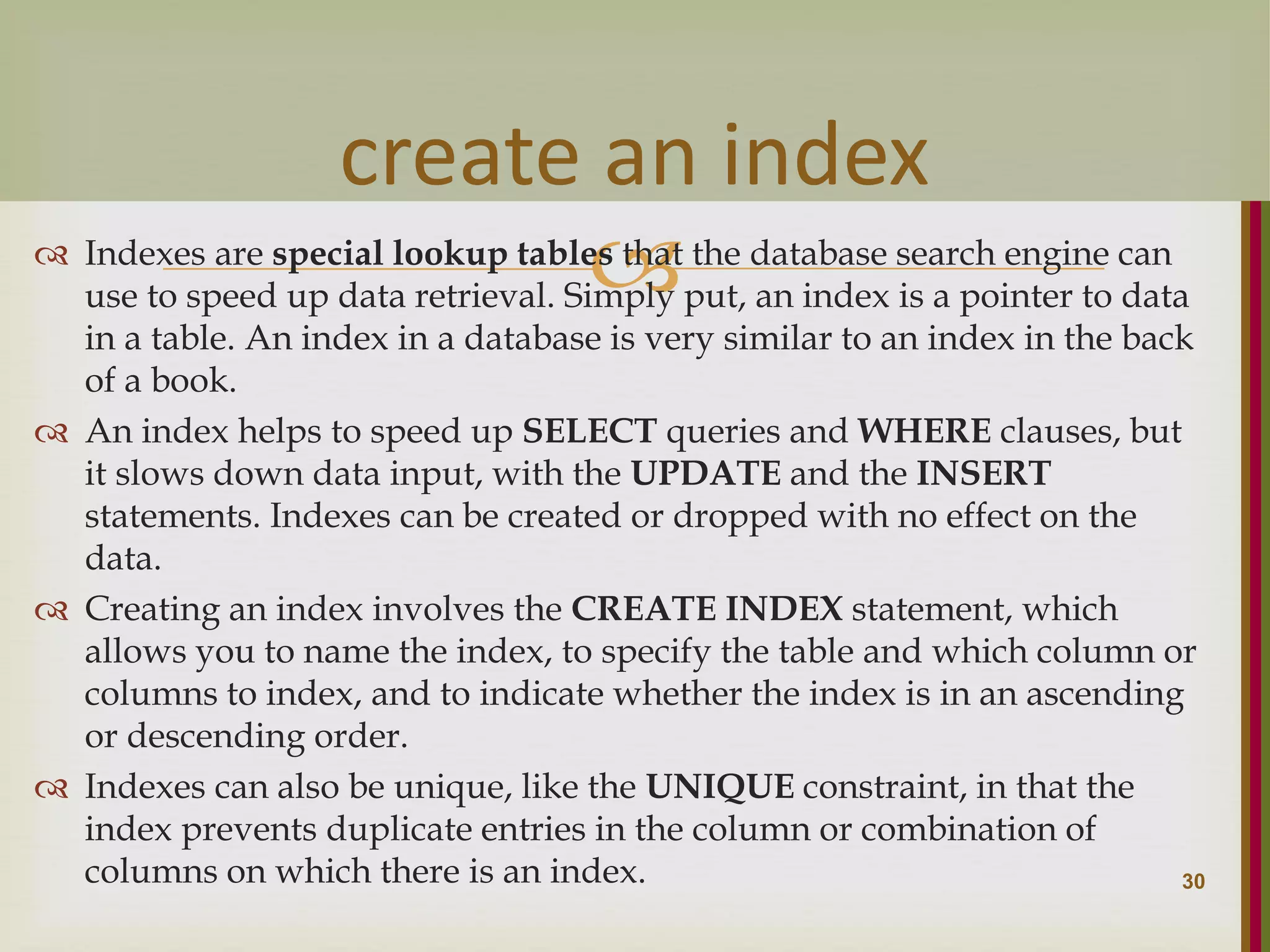

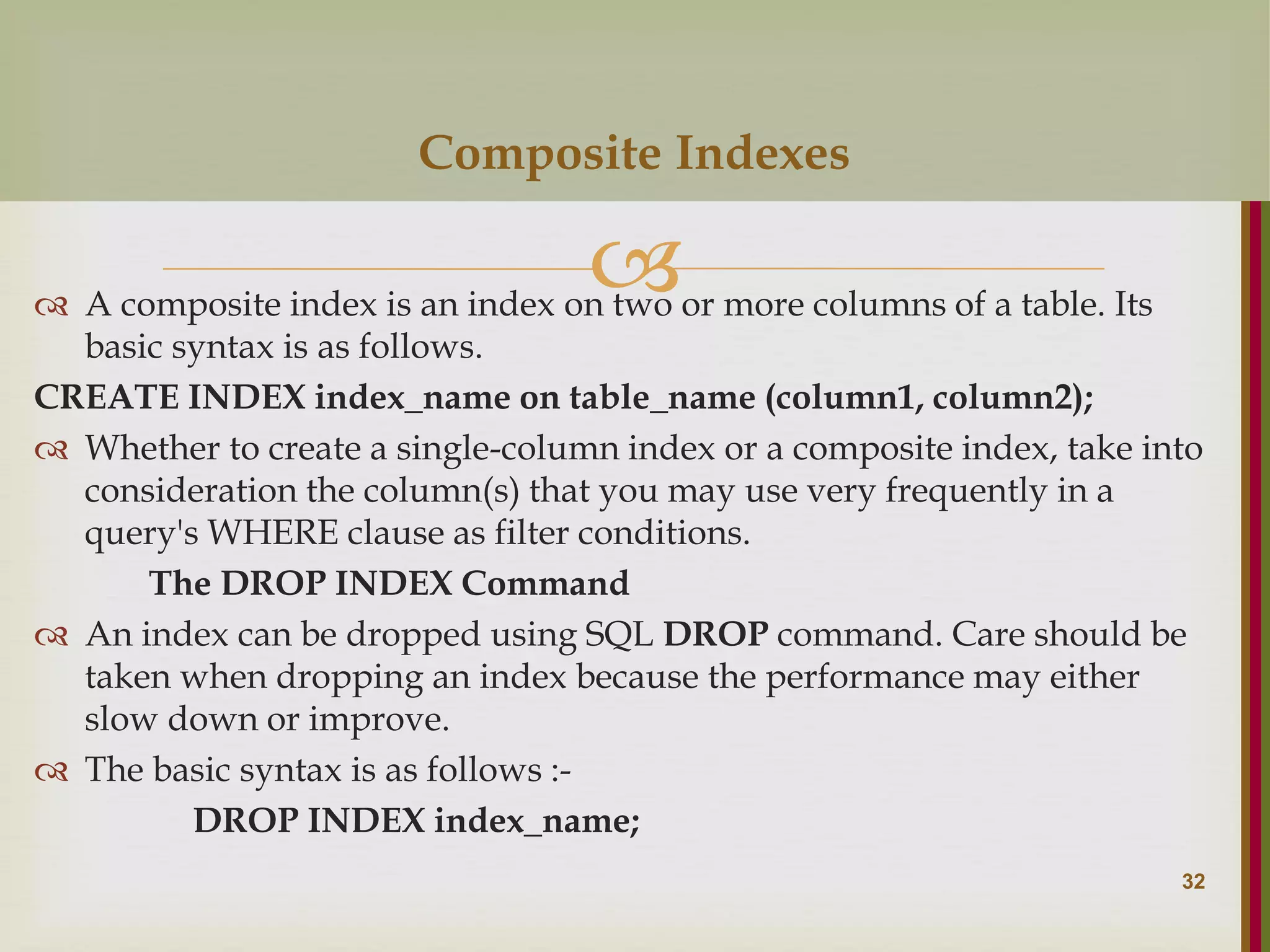
![ The SQL GROUP BY clause is used in collaboration with the SELECT statement to arrange identical data into groups. This GROUP BY clause follows the WHERE clause in a SELECT tatement and precedes the ORDER BY clause. Syntax The basic syntax of a GROUP BY clause is shown in the following code block. The GROUP BY clause must follow the conditions in the WHERE clause and must precede the ORDER BY clause if one is used. SELECT column1, column2 FROM table_name WHERE [ conditions ] GROUP BY column1, column2 ORDER BY column1, column2 33 SQL GROUP BY](https://image.slidesharecdn.com/chapter8sql-220802074348-410cf173/75/chapter-8-SQL-ppt-34-2048.jpg)